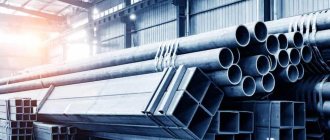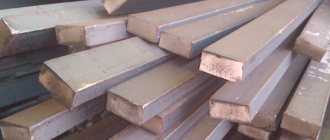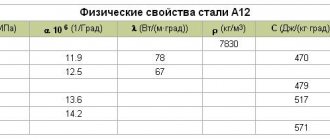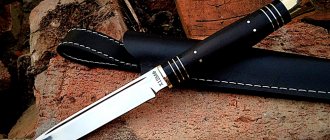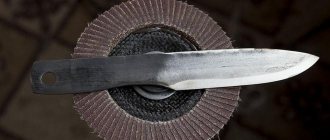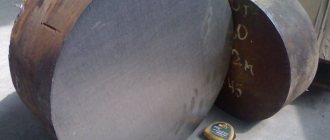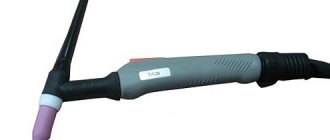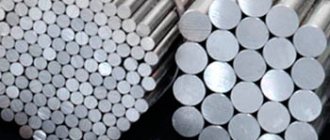Steel 06Х1 Steel 06Х1Ф Steel 06ХГР Steel 06ХФ Steel 07Х3ГНМУА Steel 08GDNF (SL-2; 08GDNFL) Steel 08Х2Г2ФА Steel 08ХМФЧА (08ХМФЧ) Steel 08ХМЧА (08ХМЧ) Steel 09ГСFA (09ГSF ) Steel 09N2MFBA (09N2MFBA-A) Steel 09SFA (09SF) Steel 09ХГ2NABch Steel 09KhN2MD (AB2-Sh1) Steel 09KhN3MD (AB3) Steel 09KhN4MD (AB4) Steel 10G2 (10G2A) Steel 10GN (10GNA) Steel 10KH1S2M Steel 10KH2GNM (10KH2GNMA) Steel 10KH2M1 (10KH2M1A) Steel 10Kh3GNMYuA Steel 10KhN3MD (AB2-Sh2) Steel 12G1R Steel 12Kh2N4A (EI83) Steel 12Kh2NVFA (EI712) Steel 12Kh2NVFMA (EP506; EI712M) Steel 12Kh2NM1FA Steel 12Kh2NMFA Steel 12KhGN2MFBDAYU (VS-4) Steel 12KhGNM Steel 12KhGNMF Steel 12Kh N Steel 12ХН2 Steel 12ХН2А Steel 12ХН2МД (АБ1) Steel 12ХН3А Steel 12ХН3МД (АБ2; steel 13KhFA (13KhF) Steel 14N2MFD (14N2MFDA) Steel 14Kh2GMR Steel 14Kh2N3MA Steel 14Kh3GMYu Steel 14KhG2SAFD Steel 14KhGN Steel 14KhGN2MDAFB (14KhGNMDAFB) Steel 14KhGNMDAFBRT (14KhGNMD) Steel 14KHGSN2MA (EP176; DI3A) Steel 14HN3MA Steel 15G (15G1) Steel 15GYUT Steel 15N2M (15NM) Steel 15N3MA Steel 15X Steel 15KH1SMFB Steel 15KH2GN2TA Steel 15KH2GN2TRA Steel 15ХА Steel 15KHGN2MAFach Steel 15KHGN2 TA (15KhGNTA) Steel 15KhGNM (15KhGNMA) Steel 15KhMFA (15KhMF) Steel 15KhN3 Steel 15KhP Steel 15KhSMFB (EP79) Steel 15KhFA (15KhF) Steel 16G2 Steel 16Kh2N3MFBAYU (16Kh2N3MFAB; VKS7) Steel 16Kh3NVFMB (VKS-5; DI39) Steel 16KhG (ATs16KhG) Steel 16KhGTA (EI274) Steel 16KhN3MA Steel 16ХСН Steel 17Н3МА Steel 17ХГ Steel 18Г2ХФУД Steel 18Х2Н4ВА Steel 18Kh2N4MA Steel 18KhG Steel 18KhGN2MFB Steel 18KhGT Steel 18KhN2T Steel 18KhN3MA Steel 18KhNVA Steel 18KhNMFD (18KhNMFDA) Steel 19Kh2NVFA (EI763) Steel 19Kh2NMFA Steel 19KhGN Steel 19KhGNMA (19KhGNM) Steel 19KhGS Steel 20G (20G1) Steel 20G2 Steel 20G2AF (20G2AFps) Steel 20G2R Steel 20GYUT Steel 20N2M (20NM) Steel 20F (20FA) Steel 20Kh Steel 20Kh2MA Steel 20Kh2MFA Steel 20Kh2N4A Steel 20Kh2N4MF (20Kh2N4MFA) Steel 20Kh3NMF (20Kh3NMFA) Steel 20KhGNM Steel 20KhGNMT (20KhGNMTA) ) Steel 20KhGNR Steel 20KhGNTR Steel 20KhGR Steel 20KhGSA Steel 20KhGSR Steel 20KhM Steel 20KhN Steel S hoist 22ХНМ Steel 23G2D Steel 23Х2НВФА (ЭИ659) Steel 23Х2НМФА Steel 23ХН2М Steel 24G2 Steel 24Kh3MF (24Kh3MFA) Steel 24ХНМ Steel 25G (25G2) Steel 50G Steel 50G2 Steel 50Х Steel 50ХН Steel 5ХНМ2 Steel 85ГФ Steel AK32 Steel AK33 Steel AK34 Steel AK35 Steel AK36 Steel AK37 Steel AK48 Steel AK49 Steel AK50 Steel 25N Steel 25N3A Steel 25Х2Н4ВА Steel 25Х2Н4МА Steel 25KhG2SFR Steel 25KhGM Steel 25KhGNMA (25KhGNM) Steel 25KhGNMT (25KhGNMTA) Steel 25KhGSA Steel 25KhGT Steel 25KhM Steel 25KhN3 Steel 25KhNTS Steel 26G1 Steel 26Kh1MA (26Kh1M) Steel 26Kh2NVM BR (KVK-26) Steel 26KhGM Steel 26KhGMF (26KhGMFA) Steel 26KhMA (26KhM; 25ХМ) Steel 27KhGR Steel 30G (30G1) Steel 30G1R Steel 30G2 Steel 30T Steel 30Х Steel 30Х2Н2ВФА Steel 30Х2Н2ВФМА Steel 30Х2НВА Steel 30Х2НВФА Steel 30Х2НВФМА Steel 30Х2НМА Steel 30Х2НМ FA (30Kh2NMF) Steel 30Kh3MF Steel 30Kh3MFSA Steel 30Kh3NVA Steel 30KhGS Steel 30KhGSA Steel 30KhGT Steel 30KhM Steel 30KhMA Steel 30KhN2VA Steel 30KHN2VFA Steel 30KHN2MA (30KHNMA) Steel 30KHN2MFA Steel 30KHN3A Steel 30KHN3M Steel 30KHNMFA (30KHNVFA) Steel 30KHRA Steel 30KHSNVFA (VP30) Steel 32G2 Steel 32G2S Steel 32Kh 2NVMBR (KVK-32) Steel 33Х3SNMVFA (SP33; EP613) Steel 33ХН3МА Steel 33ХС Steel 34ХН1ВА (0ХН1В) Steel 34ХН3М Steel 35G Steel 35Г1Р Steel 35Г2 Steel 35Х Steel 35Х2ГУФ Steel 35ХГН2 Steel 35ХGSA Steel 35ХМ Steel 35ХН2Ф Steel 35ХН3МА (35ХН3М) Steel 36G2S Steel 36G 2SR Steel 36Kh2N2MFA (36KhN1MFA) Steel 37G2S Steel 37Kh2NVMBR (KVK-37) Steel 37KhN3A Steel 38Х2МУА (38ХМУА) Steel 38Х2Н2ВА Steel 38Х2Н2МА (38ХНМА) Steel 38Х2Н3М Steel 38Х2НМ Steel 38Х2НМФ Steel 38Х2У (38Х2УА) Steel 38ХА Steel 38ХГМ Steel 38ХГН Steel 38ХГНМ Steel 3 8KhGSA (38KhGS) Steel 38KhM (42KhM) Steel 38KhMA Steel 38KhN3VA Steel 38KhN3MA Steel 38KhS Steel 38KhFR (40KhFR) Steel 40G Steel 40G2 Steel 40GR (40G1R) Steel 40Kh (40KhA) Steel 40Kh2N2VA Steel 40Kh2N2MA Alloy 40Kh3M2FA (USP-40) Steel 40KhGNM Steel 40KhGSMA Steel 40KhGTR Steel 40KhMFA (40KhMF) Steel 40ХН Steel 40ХН2ВА (40ХНВА) Steel 40ХН2МА (40ХНМА) ) Steel 40KhP Steel 40KhS Steel 40KhSN2MA Steel 40KhFA (40KhF) Steel 42Kh2NVMBR (KVK-42) Steel 42Kh2NMBR (ABO70N) Steel 42KhMFA (42KhMF) Steel 44Kh2NMBR (ABO70V) Steel 45G Steel 45G2 Steel 4 5Х Steel 45ХН Steel 45ХН2МФА (45ХНМФА) Steel 47ГТ Steel 48ХН3М
Designations
| Name | Meaning |
| Designation GOST Cyrillic | 20G |
| Designation GOST Latin | 20G |
| Translit | 20G |
| By chemical elements | 20Mn |
| Name | Meaning |
| Designation GOST Cyrillic | 20G1 |
| Designation GOST Latin | 20G1 |
| Translit | 20G1 |
| By chemical elements | 20Mn1 |
Application area
- Mechanical engineering. For the production of gears, couplings, components of worm pairs. In addition, they produce first-class fastening devices and connecting elements.
- Pipeline industry for the production of fittings.
- Construction. Due to its most valuable characteristics, ST20 is used for the production of metal structures.
Excellent fastening characteristics during soldering, affordable price, and good strength allow the elements to be used in load-bearing structures.
Description
Steel 20 G is used : for the manufacture of rivets for critical purposes after improvement; after carburization or cyanidation - piston pins, friction discs, spring pins, cam rollers, bolts, nuts, gears, worms and other parts with high surface hardness and wear resistance; without heat treatment - welded sub-engine frames, shoes, gussets; cold-deformed pipes intended for the manufacture of bushings for track links and piston pins for tractor engines; rolled strip used for the manufacture of automobile parts.
Note
High-quality structural manganese steel.
Types of rental
All of the above descriptions make steel grade 20 in demand in the manufacture of various types of rolled profiles. Rentals are obtained in two main ways:
- Hot deformation. Apply to workpieces whose thickness is more than 4 mm. The disadvantage of this treatment is the formation of scale, which is an additional stress concentrator.
- Cold deformation. Used for rolling workpieces up to 4 mm thick. The main advantage of this treatment is the additional strengthening of the alloy as a result of cold hardening.
The following products are produced from steel 20:
- All-welded cold-rolled pipes. The sheets are rolled along a radius and then the edges are welded with a straight seam.
- Seamless pipes. Produced by hot and cold drawing. Features of these pipes are increased strength compared to their welded counterparts and, accordingly, higher cost.
- All kinds of profiles: rod, sheet, angle, channel, I-beam, wire, etc.
Standards
| Name | Code | Standards |
| Long and shaped rolled products | B32 | GOST 1051-73, GOST 4543-71, GOST 7417-75, GOST 8559-75, GOST 8560-78, GOST 10702-78, GOST 14955-77, GOST 1050-2013, TU 14-1-2118-77, TU 14-11-245-88, TU 14-1-1271-75, TU 14-1-5228-93, TU 14-136-367-2008 |
| Long and shaped rolled products | B22 | GOST 1133-71, GOST 8278-83, GOST 8281-80, GOST 8282-83, GOST 8283-93, GOST 8319.0-75, GOST 9234-74, GOST 11474-76, GOST 2590-2006, GOST 2591-2006, TU 14-2-341-78 |
| Sheets and strips | B33 | GOST 1577-93, TU 14-1-522-93, TU 14-1-1832-76, TU 14-1-522-73 |
| Sheets and strips | B23 | GOST 82-70, GOST 19903-74, GOST 103-2006, GOST 19903-90 |
| Blanks. Blanks. Slabs | B31 | OST 3-1686-90, TU 14-1-4944-90 |
| Steel pipes and connecting parts for them | B62 | TU 14-3-316-74, TU 14-3-575-90 |
Areas of application
Certain technical characteristics of steel 20 explain its use in different areas of industry:
- Production of pipe fittings (sleeve nuts, fittings, flanges, crosses, nipples).
- Manufacturing of building materials.
- Assembly of various metal structures, machines, ships, industrial equipment.
This metal is used to produce:
- Seamless pipes. Manufactured by cold or hot drawing. Their feature is high strength.
- All-welded cold-rolled pipes.
- Various profiles (wire, I-beams, channels, metal corners, sheets of different thicknesses, rods).
Products from this alloy are manufactured according to certain state standards:
- GOST 17305-91—production of wire of different sections.
- GOST 82-70 - production of metal strips of different widths.
- GOST 16523-97 - production of light sheets of small thickness.
- GOST 10704-9 - pipe manufacturing.
- GOST 8479-70 - production of forged parts, forgings.
- GOST 1577-93 - production of metal sheets of large thickness.
- GOST 14955-77 - production of silver and grinding rods.
- GOST 7417-75 - production of calibrated rods.
- GOST 8240-97, GOST 1050-88 - production of shaped and long products.
GOSTs indicate the basic requirements for finished products and their testing for admission to sale.
Steel sheets
Chemical composition
| Standard | C | S | P | Mn | Cr | Si | Ni | Fe | Cu | V | Ti | Mo | W |
| GOST 4543-71 | 0.17-0.24 | ≤0.035 | ≤0.035 | 0.7-1 | ≤0.3 | 0.17-0.37 | ≤0.3 | Remainder | ≤0.3 | ≤0.05 | ≤0.03 | ≤0.15 | ≤0.2 |
Fe is the basis. According to GOST 4543-71, the content in high-quality steel is regulated: P≤0.025%; S≤0.025%; Сu≤0.30%; in especially high-quality steel: P≤0.025%; S≤0.015%; Сu≤0.25%.
Structural alloy steel 20G
Brand 20G – purpose
Structural alloy manganese steel 20G without heat treatment is used for the manufacture of shoes, gussets, and engine frames; after improvement, rivets for responsible purposes are released; after cyanidation/carburization - friction discs, piston pins, cam rollers, nuts, bolts, worms, gears, and other products with high wear resistance and surface hardness.
Steel 20G - domestic analogues
| Rolled metal grade | Substitute |
| 20G | 20 |
| 30 |
Characteristics
| Brand | GOST | Foreign analogues | Classification |
| 20G | 4543–71 | There is | Alloy structural steel |
| 1577–93 |
Material 20G – technological properties
| Flock sensitivity | Weldability | Welding methods | Tendency to temper brittleness |
| not sensitive | no limits | KTS, RDS, ADS (flux + shielding gas) | not inclined |
Brand 20G – chemical composition
Mass fraction of elements no more than, %:
| Silicon | Manganese | Copper | Nickel | Sulfur | Carbon | Phosphorus | Chromium |
| 0,17–0,37 | 0,7–1 | 0,3 | 0,3 | 0,035 | 0,17–0,24 | 0,035 | 0,3 |
Steel 20G – mechanical properties
| Assortment | GOST | Dimensions – thickness, diameter | Heat treatment | KCU | y | d5 | sT | sв |
| mm | kJ/m2 | % | % | MPa | MPa | |||
| Bar | 4543–71 | 25 | Normalization 8800С (air) | 50 | 24 | 275 | 450 | |
| The leaf is thick | 1577–93 | Normalization | 27 | 440 | ||||
| Annealing | 28 | 400 |
Material 20G – hardness, MPa
| Assortment | GOST | HB 10-1 |
| Rental after normalization | 1577–93 | 197 |
| after annealing | 4543–71 | 179 |
Brand 20G – temperature of critical points, 0C
| Critical points | Ac1 | Ac3 | Ar1 | Ar3 | Mn |
| Temperature | 723 | 830 | 680 | 830 | 420 |
Steel – impact strength, J/cm2
| Assortment | Heat treatment | KCU at temperatures | ||||
| -600WITH | -400WITH | -200WITH | 00WITH | +200WITH | ||
| Bar | Quenching 8900C (water). Holiday 6500C | 113–118 | 122 | 139 | 139 | 169 |
| The sheet is hot rolled. | Normalization | ≥ 29 | ||||
Material 20G – physical properties
| T | R 109 | E 10-5 | l | a 106 | r | C |
| hail | Ohm m | MPa | W/(m deg) | 1/Grad | kg/m3 | J/ (kg deg) |
| 20 | 2.04 | 7820 | ||||
| 100 | 78 | 12.5 | ||||
| 200 | 67 | 13.4 | 525 | |||
| 300 | 48 | 14.4 | ||||
| 400 | 15.1 | 554 | ||||
| 500 | ||||||
| 600 | 15.2 | 689 |
Brand 20G – exact and closest foreign analogues
| England | Bulgaria | Germany | European Union | China | Poland | USA | France | Czech | Japan |
| B.S. | BDS | DIN, WNR | EN | G.B. | PN | — | AFNOR | CSN | JIS |
| 080A20 | |||||||||
| 90440 |
| 20Mn5 |
| 25 |
| 1022 |
| G10210 |
| G10220 |
| H15211 |
Mechanical characteristics
| Section, mm | holiday t, °C | sТ|s0.2, MPa | σB, MPa | d5, % | d10 | d10 | y, % | Brinell hardness, MPa | H.R.C. |
| Hot rolled steel and hot rolled steel with special surface finishing | |||||||||
| — | — | — | — | — | — | — | — | ≤179 | — |
| Calibrated and calibrated steel with special surface finish | |||||||||
| — | — | — | — | — | — | — | — | ≤187 | — |
| The strip is in the delivered condition (without heat treatment in the etched state) according to TU 14-1-522-93 | |||||||||
| — | — | ≥275 | ≥450 | ≥24 | — | — | — | — | — |
| Normalization at 880°C, air. | |||||||||
| ≤25 | — | ≥275 | ≥450 | ≥24 | — | — | ≥50 | — | — |
| Quenching in water at 890 °C + tempering at 450 °C, oil | |||||||||
| 20 | — | ≥390 | ≥450 | — | ≥8 | — | ≥67 | — | — |
| Quenching in water at 890 °C + tempering 400-600 °C, oil | |||||||||
| — | 400 | ≥920 | ≥980 | — | — | ≥6 | ≥67 | — | — |
| Normalization at 900 °C, air + tempering at 610 °C, air cooling | |||||||||
| ≤650 | — | ≥235 | ≥430 | ≥24 | — | — | — | 126-163 | — |
| Quenching in water at 890 °C + tempering at 450 °C, oil | |||||||||
| 40 | — | ≥300 | ≥360 | — | ≥12 | — | ≥74 | — | — |
| Quenching in water at 890 °C + tempering 400-600 °C, oil | |||||||||
| — | 500 | ≥700 | ≥780 | — | — | ≥12 | ≥74 | — | — |
| Quenching in water at 890 °C + tempering at 450 °C, oil | |||||||||
| 60 | — | ≥210 | ≥270 | — | ≥16 | — | ≥78 | — | — |
| Quenching in water at 890 °C + tempering 400-600 °C, oil | |||||||||
| — | 600 | ≥540 | ≥640 | — | — | ≥15 | ≥79 | — | — |
| Cementation at 900-920 °C, cooling in air + quenching in oil from 780-800 °C + tempering 180-200 °C, air | |||||||||
| ≤25 | — | 325-370 | 540-590 | ≥16 | — | — | ≥40 | 146-163 | 57-63 |
Mechanical properties of steel 20-PV
| ND | σ0.2, MPa | σВ, MPa | δ5, % | y, % | KCU, J/m2 | HB | H.R.C. |
| TU 14-3-1881-93 | 265 | 450-550 | 26 | 55 | 69 | ||
| TU 14-1-5058-91 | 245 | 410 | 30 | 60 | 69 | ||
| TU 14-1-5185-93 | 265 | 430-550 | 26 | 55 | 69 | ||
| TU 14-3R-55-2001 | 412-550 | 24 | 45 | 49 | |||
| TU 14-3R-55-2001 | 412-550 | 22 | 40 | 39 |
Description of mechanical symbols
| Name | Description |
| Section | Section |
| sT|s0.2 | Yield strength or proportional limit with tolerance for permanent deformation - 0.2% |
| σB | Short-term strength limit |
| d5 | Elongation after break |
| d10 | Elongation after break |
| d10 | Elongation after break |
| y | Relative narrowing |
| H.R.C. | Rockwell hardness (diamond indenter, spheroconic) |
Interpretation of steel grade 20-PV
Interpretation of steel: Structural high-quality carbon steels are produced in converters or in open-hearth furnaces. The designation of these steel grades begins with the word “Steel”. The next two numbers indicate the average carbon content in hundredths of a percent, the numbers 20 indicate its content of about 0.2 percent, the letters PV indicate the hot rolling technology: cross-helical rolling occupies an intermediate position between longitudinal and transverse. This method is widely used to produce hollow pipe blanks. The cylindrical body being processed, passing between the rolls, rotates and at the same time makes a translational movement, that is, each point of the body (except for those located on its axis) moves along a helical trajectory.
physical characteristics
| Temperature | E, GPa | r, kg/m3 | l, W/(m °С) | a, 10-6 1/°С | C, J/(kg °C) |
| 0 | 204 | 7820 | — | — | — |
| 20 | 204 | 7820 | — | — | — |
| 100 | — | — | 78 | 125 | — |
| 200 | — | — | 67 | 134 | 525 |
| 300 | — | — | 48 | 144 | — |
| 400 | — | — | — | 144 | 525 |
| 600 | — | — | — | 151 | 554 |
| 800 | — | — | — | 152 | 689 |
Main characteristics and properties
When choosing a metal, much attention is paid to the main characteristics. We include:
- Hardness index. It can vary over a wide range and depend on whether heat treatment has been carried out. The hardness of steel 20 is maintained at 163 MPa. This is quite enough for the manufacture of various products that have high wear resistance.
- Density is also taken into account. Less dense materials are used to make products that will be lightweight. In the case under consideration, the indicator is 7.85 k/cm3.
- When considering the main characteristics, the yield strength and tensile strength are taken into account. They are considered when creating various projects. Metal St 20 can be improved in order to increase the characteristics of the material.
- The structure is characterized by the fact that it is not prone to temper brittleness and the formation of flakes.
- The heat treatment of steel 20 can significantly increase the service life of the product. It is carried out under certain conditions. For example, for forging, the structure is heated to a temperature of 1,280 degrees Celsius.
- If necessary, it is possible to weld parts.
- The impact strength of steel 20 determines that the metal is often used in the manufacture of shafts and other similar products that can be used to create elements used in the creation of various mechanisms. The elastic modulus is also taken into account when considering the basic properties of the metal.
- The average thermal conductivity coefficient determines that the structure can heat up quickly enough, but at the same time heat is removed with high efficiency.
Properties St 20
The mechanical properties of steel 20 determine the fairly wide distribution of this grade in mechanical engineering and other industries. As previously noted, technical characteristics can be improved by heat treatment or alloying. Restructuring the structure of the metal makes it possible to increase the hardness of the surface layer; by adding other chemicals, special qualities can be imparted, for example, corrosion resistance.
Download GOST 1050-2013
Heat treatment involves changing the structure due to exposure to a certain temperature. Critical points are selected depending on the characteristics of the chemical composition. The features of such a procedure include the following points:
- To provide the required impact, special equipment is used. Examples include blast furnaces and induction furnaces. For a long period, blast furnaces were used, but they are inferior to induction furnaces. The second version is suitable for installation in small workshops.
- Critical points are taken into account when carrying out the procedure under consideration. It is worth considering that they have already been identified for all metals, so there is no need to conduct the research again.
- The workpiece is heated to the required temperature, after which the initial restructuring of the structure occurs. The holding time is also an important indicator that must be taken into account, as is the heating rate.
- Attention is also paid to the cooling process. Workpieces that are too large are cooled in air, as problems arise in creating the required environment. For a long period of time, cooling was carried out in water, but this led to the appearance of scale. It is possible to ensure a higher quality of heat treatment by using oil as a cooling medium. However, when cooling in oil, one should take into account the high probability of toxic smoke formation and surface ignition due to high temperature.
Steel hardening colors
In many cases, surface defects are formed after heat treatment. That is why the procedure is used for workpieces or products that are created taking into account the allowance. After hardening, tempering is often carried out, which allows you to relieve internal stresses and reduce the likelihood of damage to the product when dropped or subjected to an impact load.
Technological properties
| Name | Meaning |
| Weldability | welded without restrictions (except for chemically and thermally treated parts). Welding methods: RDS, ADS under submerged arc and gas protection, KTS without restrictions. |
| Tendency to temper brittleness | not inclined |
| Forging temperature | Start - 1260 °C, end - 750 °C. Section up to 600 mm, annealing with recrystallization (or normalization), one supercooling, tempering. |
| Flock sensitivity | not sensitive |
| Machinability | In a normalized state at HB 143-187 Kn solid alloy = 1.00 Kn b.st. = 0.95 |
| Microstructure | The size of austenitic grain in steel should be no larger than number 5 according to GOST 5639. |
Properties
Grade 20 carbon steel has low brittleness. Thanks to its low Carboneum content it also:
- little susceptible to the formation of flakes (internal breaks) during manufacturing;
- plastic, easy to stamp;
- excellent weldability;
- has increased wear resistance.
However, it cannot be classified as a high-strength material. To increase surface strength, cementation is used - the upper layers of steel 20 parts are saturated with carbon.
Stainless steels
| steel grade | Analogue | Application |
| 15Х25Т | 12Х18Н10Т | Welded metal products, parts that do not experience dynamic loads. The operating temperature should not fall below 20 °C. Suitable for handling products transporting any aggressiveness. Heat-resistant steel belongs to the ferritic class and is resistant to corrosion. Withstands temperatures up to + 1100 °C. |
| 10Х14Г14Н4Т | 12Х18Н10Т, 12Х18Н9Т | Welded elements for slightly aggressive chemical environments, cryogenic equipment up to - 250 °C. Austenitic class material is designed for temperatures of +700 °C. Corrosion resistant. |
| 14Х17Н2 | 10Х17Н13М2Т | Fastening elements, welding devices for highly aggressive transportation products. Maximum operating temperature + 600 °C. Austenitic grade material with corrosion resistant properties. |
| 12Х18Н12Т | 12Х18Н9, 12Х19Н9Т | Designs that function with environments of any aggressiveness at temperatures from -195 to +600 °C. Heat-resistant steel belongs to the austenitic class and is resistant to corrosion. |
| AISI 304 | 12X18H10 | Because steel is resistant to high temperatures and oxidation; it is used for equipment (including welded equipment) that comes into contact with food. In demand in the food industry and pharmacology. Household items and equipment are made from it for use in conditions of elevated temperatures and constant chemical exposure. |
| AISI 316L | 03Х17Н14М3 | The material is easy to process: pipes, sheets, profiles, and other metal products are made from it. It is used in the oil production, engineering, food, pharmaceutical, and construction industries. It is used to create dishes and cutlery. |
| AISI 316T | 10Х17Н13М2Т | Power engineering, chemical, oil, gas, pulp and paper industries, construction. Stainless heat-resistant steel is used to make devices for working with acids, heat exchangers, and turbine blades. |
| AISI 321 | 08X18H10T | Heat-resistant welding structures/mechanisms that are mounted outdoors (pipelines, collectors); equipment for the oil and chemical sectors; products for the food and pharmaceutical industries. |
| AISI 904L | 06ХН28МДТ | Compatible with aggressive, radioactive environments. Widely used in the chemical, oil, gas, food, pharmaceutical, and medical industries. Serves as the basis for pipelines, heat exchange equipment, and welded structures for reactors. |

